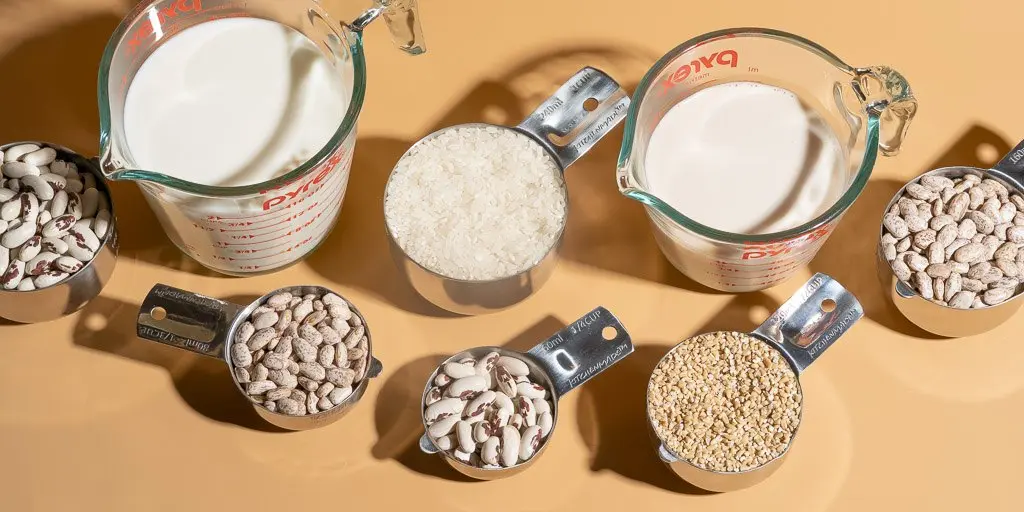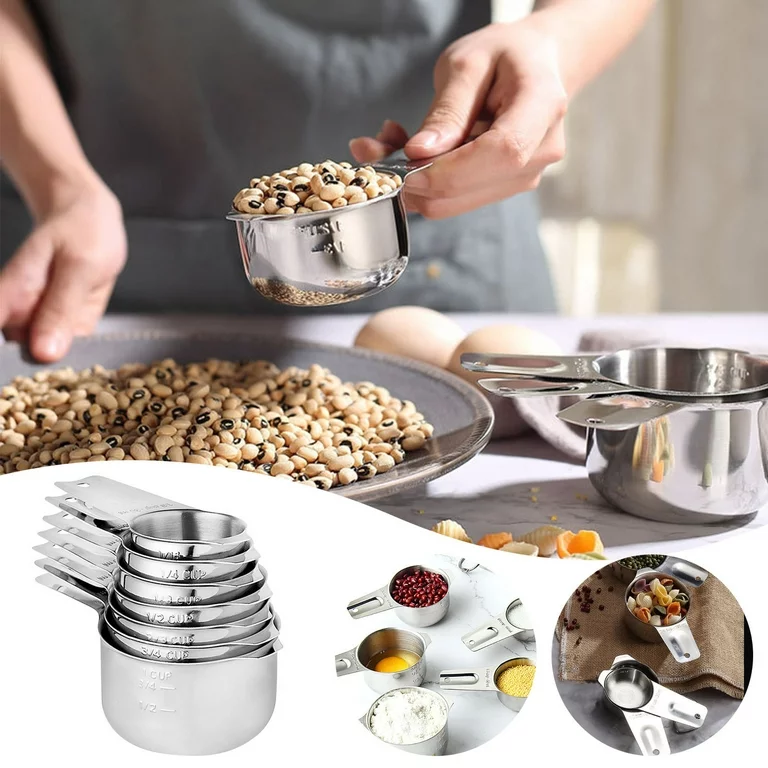In the culinary world, precise measurements are paramount to the success of any recipe. Measuring cups and spoons are indispensable tools that ensure accuracy and consistency in cooking and baking endeavors. Whether you’re a seasoned chef or a novice in the kitchen, understanding the nuances of these tools is essential for mastering the art of culinary creation.

Types of Measuring Cups
Dry Measuring Cups
Dry measuring cups are designed to measure ingredients like flour, sugar, and grains. These cups typically come in sets ranging from 1/4 cup to 1 cup, with each cup size conveniently labeled for easy identification.
Liquid Measuring Cups
Liquid measuring cups feature a spout for pouring and are specifically calibrated to measure liquids accurately. They often come in larger sizes, with measurements marked in cups, ounces, and milliliters.
Dual-Purpose Measuring Cups
Some measuring cups are versatile enough to measure both dry and liquid ingredients. These dual-purpose cups offer convenience and versatility in the kitchen.
Common Materials
Measuring cups and spoons are available in various materials, each with its own set of advantages and considerations.
Plastic
Plastic measuring tools are lightweight, affordable, and resistant to breakage. However, they may absorb odors and stain over time.
Glass
Glass measuring cups are durable and easy to clean. They also provide clear visibility of the ingredients being measured.
Stainless Steel
Stainless steel measuring cups and spoons are sturdy, hygienic, and resistant to corrosion. They offer long-term durability and are suitable for both dry and liquid ingredients.
Accuracy and Precision
Accurate measurements are essential for achieving consistent results in cooking and baking. Factors such as leveling off dry ingredients and using the correct measuring technique can impact the precision of your measurements.
How to Use Measuring Cups and Spoons
Proper usage of measuring cups and spoons involves filling the utensils to the brim and leveling off excess ingredients with a straight edge. Avoid compacting ingredients and ensure that liquids are measured at eye level for accuracy.
Cleaning and Maintenance
To prolong the lifespan of your measuring cups and spoons, it’s important to clean them thoroughly after each use. While some tools are dishwasher-safe, handwashing with mild soap and warm water is recommended for optimal maintenance.
Measuring Cups and Spoons in Different Cultures
Cultural differences can influence the types of measuring tools used in various cuisines. Traditional measuring methods may vary based on regional customs and culinary practices.
Measuring Cups and Spoons in Baking
In baking, precise measurements are critical for achieving the desired texture and flavor in baked goods. Measuring ingredients such as flour, sugar, and leavening agents accurately can make a significant difference in the final outcome of your baked creations.
Environmental Considerations
As sustainability becomes increasingly important, eco-conscious consumers may opt for measuring tools made from renewable materials or seek out recyclable alternatives to minimize their environmental impact.
Innovations in Measuring Tools
Advancements in technology have led to the development of digital measuring cups and smart kitchen scales, offering precise measurements and enhanced convenience for modern home cooks.
Measuring Cups and Spoons in Professional Settings
In commercial kitchens, accurate measurements are essential for maintaining consistency in recipe execution and ensuring food safety standards are met. Professional chefs rely on precise measurements to deliver high-quality dishes to their customers.
DIY Measuring Solutions
For those seeking creative alternatives to traditional measuring tools, DIY solutions using common household items can provide practical and budget-friendly options for accurate measurement.
Measuring Cups and Spoons for Dietary Needs
Measuring tools play a vital role in portion control and adherence to dietary restrictions. Whether managing calorie intake or accommodating food allergies, accurate measurements are key to maintaining a healthy and balanced diet.
Conclusion
Measuring cups and spoons are indispensable tools that empower cooks and bakers to create culinary masterpieces with precision and confidence. By prioritizing accurate measurements and understanding the nuances of these essential utensils, you can elevate your cooking and baking skills to new heights.
FAQs
Can I use a regular cup instead of a measuring cup?
While it’s possible to use a regular cup for measuring, it may not provide accurate results due to variations in size and shape. For precise measurements, it’s best to use dedicated measuring cups.
How do I measure sticky ingredients like honey or syrup?
To measure sticky ingredients accurately, coat the measuring spoon or cup with a thin layer of oil or nonstick cooking spray. This will help the ingredients slide off easily, ensuring precise measurements.
What’s the difference between wet and dry measuring cups?
Wet measuring cups are designed to measure liquids and typically feature a spout for easy pouring. Dry measuring cups, on the other hand, are used for measuring dry ingredients and often come in nested sets for convenience.
Can I interchange measuring cups and spoons from different sets?
While it’s generally best to use matching sets of measuring cups and spoons for consistency, interchanging between sets should not significantly affect the accuracy of your measurements as long as you’re using standardized units.
Are plastic measuring tools safe for hot liquids?
Most plastic measuring tools are heat-resistant and safe for use with hot liquids. However, it’s essential to check the manufacturer’s guidelines to ensure that your specific measuring tools are suitable for high temperatures.
